
Agustín Cosme Damián de Iturbide y Arámburu, commonly known as Agustín de Iturbide and later by his regnal name Agustín I, was the first Emperor of Mexico from 1822 until his abdication in 1823. An officer in the royal Spanish army, during the Mexican War of Independence he initially fought insurgent forces rebelling against the Spanish crown before changing sides in 1820 and leading a coalition of former royalists and long-time insurgents under his Plan of Iguala. The combined forces under Iturbide brought about Mexican independence in September 1821. After securing the secession of Mexico from Spain, Iturbide was proclaimed president of the Regency in 1821; a year later, he was proclaimed Emperor, reigning from 19 May 1822 to 19 March 1823, when he abdicated. In May 1823 he went into exile in Europe. When he returned to Mexico in July 1824, he was arrested and executed.

Guadalupe Victoria, born José Miguel Ramón Adaucto Fernández y Félix, was a Mexican general and politician who fought for independence against the Spanish Empire in the Mexican War of Independence and after the adoption of the Constitution of 1824, was elected as the first president of the United Mexican States. He was a deputy in the Mexican Chamber of Deputies for Durango and a member of the Supreme Executive Power following the downfall of the First Mexican Empire, which was followed by the 1824 Constitution and his presidency. He later served as Governor of Puebla.
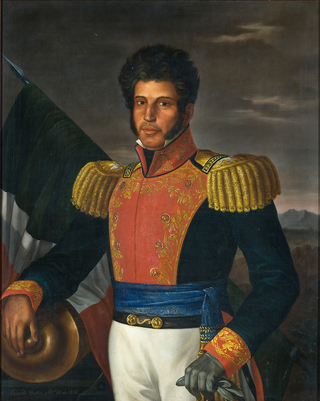
Vicente Ramón Guerrero Saldaña was a Mexican military officer from 1810-1821 and a statesman who became the nation's second president in 1829. He was one of the leading generals who fought against Spain during the Mexican War of Independence. According to historian Theodore G. Vincent, Vincente Guerrero lived alongside indigenous in Tlaltelulco and had the ability to speak Spanish and the languages of the Indigenous.

The Mexican War of Independence was an armed conflict and political process resulting in Mexico's independence from the Spanish Empire. It was not a single, coherent event, but local and regional struggles that occurred within the same period, and can be considered a revolutionary civil war. It culminated with the drafting of the Declaration of Independence of the Mexican Empire in Mexico City on September 28, 1821, following the collapse of royal government and the military triumph of forces for independence.

Nicolás Bravo Rueda was a Mexican soldier and politician who served as interim President of Mexico three times, in 1839, 1842, and 1846. Previously, he fought in the Mexican War of Independence, and served as Mexico's first Vice President under President Guadalupe Victoria from 1824 until 1827, when he attempted to overthrow Victoria. He was also the fourth vice president under President Mariano Paredes in 1846, and served in the Mexican–American War.
The Río Arriba Rebellion, also known as the Chimayó Rebellion, was an 1837 Pueblo-Hispano popular revolt in New Mexico which succeeded in briefly placing José María González and Pablo Montoya as governor of Mexico's Santa Fe de Nuevo México territory. González and Montoya were both Taos Pueblo Indians and led the independent Junta Popular or Cantón, which was the most ethnically inclusive government in the history of New Mexico. They remain the only Pueblo governors of New Mexico to this day.
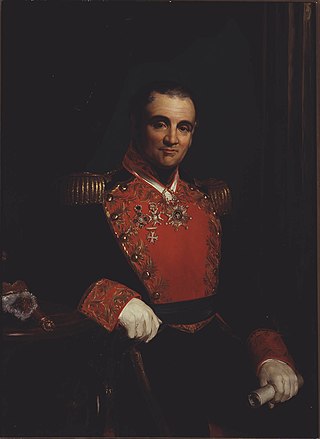
Trinidad Anastasio de Sales Ruiz Bustamante y Oseguera was a Mexican physician, general, and politician who served as the 4th President of Mexico three times from 1830 to 1832, 1837 to 1839, and 1839 to 1841. He also served as the 2nd Vice President of Mexico from 1829 to 1832 under Presidents Vicente Guerrero, José María Bocanegra, himself, and Melchor Múzquiz. He participated in the Mexican War of Independence initially as a royalist before siding with Agustín de Iturbide and supporting the Plan of Iguala.
General José María Flores (1818–1866) was a captain in the Mexican Army and was a member of la otra banda. He was appointed Governor and Comandante Generalpro tem of Alta California from November 1846 to January 1847, and defended California against the Americans during the Mexican–American War.

The Battle of Guayaquil was the final and pivotal armed confrontation in a struggle for political control of Ecuador. The battle was fought on the outskirts of the city of Guayaquil, Ecuador on September 22–24, 1860, among several factions claiming control of the country in the wake of the abdication of president Francisco Robles, amidst continuous Peruvian military pressure due to the ongoing Ecuadorian–Peruvian territorial dispute. The battle brought an end to a series of skirmishes between the forces of Gabriel García Moreno's Provisional Government, backed by General Juan José Flores, and the government of General Guillermo Franco in Guayas, which was recognized by Peruvian president Ramón Castilla.

The Declaration of Independence of the Mexican Empire is the document by which the Mexican Empire declared independence from the Spanish Empire. This founding document of the Mexican nation was drafted in the National Palace in Mexico City on September 28, 1821, by Juan José Espinosa de los Monteros, secretary of the Provisional Governmental Board.

The Capture of Mexicali, or the Battle of Mexicali, was the first action of the Mexican Revolution taken by rebel Magonistas against the federal government of Porfirio Díaz. Under the direction of Ricardo Flores Magón, a group of rebels captured the border town of Mexicali, Baja California, with little resistance.

The Battle of El Veladero was a battle of the War of Mexican Independence that occurred from 1810 to 30 April 1811 at Cerro El Veladero, Acapulco de Juárez. The battle was fought between royalist forces loyal to the Spanish crown, commanded by Juan Antonio Fuentes, and Mexican rebels, commanded by José María Morelos and Rafael Valdovinos, fighting for independence from the Spanish Empire. The rebels won.
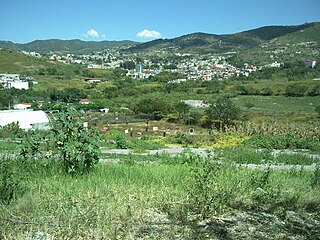
The Battle of Zitlala took place during the War of Mexican Independence on 4 July 1812 in the outskirts of Zitlala, Guerrero. The battle was fought between the royalist forces loyal to the Spanish crown, and the Mexican rebels fighting for independence from the Spanish Empire. The battle resulted in a victory for the Mexican rebels.
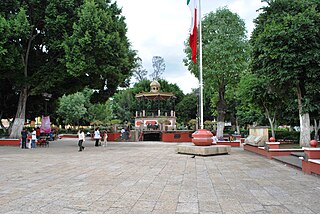
El Siege of Huajuapan de León was a battle of the Mexican War of Independence that was fought from 5 April to 23 July 1812 at Huajuapan de León, in the Mexican state of Oaxaca. The battle was fought between the royalist forces loyal to the Spanish crown, and the Mexican rebels fighting for independence from the Spanish Empire. This Spanish siege of the town, lasting 111 days, was the longest of the entire war. The battle resulted in a victory for the Mexican insurgents.

The siege of Cuautla was a battle of the War of Mexican Independence that occurred from 19 February through 2 May 1812 at Cuautla, Morelos. The Spanish royalist forces loyal to the Spanish, commanded by Félix María Calleja, besieged the town of Cuautla and its Mexican rebel defenders fighting for independence from the Spanish Empire. The rebels were commanded by José María Morelos y Pavón, Hermenegildo Galeana, and Mariano Matamoros. The battle results are disputed, but it is generally agreed that the battle resulted more favorably for the Spanish whose siege was ultimately successful with the Mexican withdrawal on 2 May 1812.
José Gabriel de Armijo (1774–1830) was a Spanish and Mexican military commander of caudillo origin known for his role in the Mexican War of Independence.
The Casa Mata Plan Revolution was a contextualized armed conflict of the struggles between the Republicans and Pro-Imperialist factions during the first half of the 19th century in the First Mexican Empire.
The following lists events that happened in 1924 in the United Mexican States.
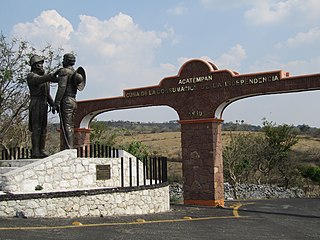
The embrace of Acatempan refers to an event in Mexican history in which Agustín de Iturbide, commander-in-chief of the military of southern New Spain, and Vicente Guerrero, leader of the forces fighting for Mexican Independence, participated. This event took place on February 10, 1821. Tradition has it that this event marked the reconciliation between the viceregal forces and the insurgent army.













